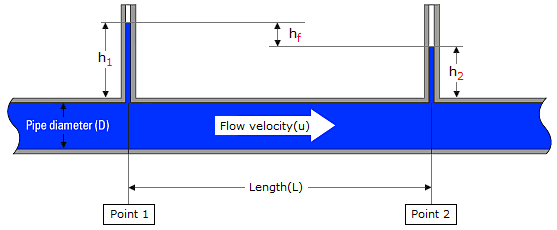 |
Steam System Design |
Pipes and pipe sizing
Pipe sizing is a crucial aspect of steam system design. This page offers detailed advice on standards, schedules, materials and sizing for various saturated and superheated steam duties.
There are a number of piping standards in existence around the world, but arguably the most global are those derived by the American Society of Mechanical Engineers (ASME) and the American Petroleum Institute (API), where pipes are categorised in schedule numbers.
These schedule numbers bear a relation to the pressure rating of the piping. For nominal pipe size NPS 6 and smaller, Schedule 40 (sometimes called 'standard weight') is the lightest that would be specified for steam applications.
Only Schedules 40 and 80 cover the full range from NPS 1/2 up to NPS 24 and are the most commonly used schedule for steam pipe installations.
Note.. For more information about steel pipes, Nominal Pipe Size, pipe schedule, fabrication, lengths and ends of pipes etc. see main Menu "Pipes".
Pipe material
Pipes for steam systems are commonly manufactured from carbon steel ASTM A106. The same material may be used for condensate lines, although copper tubing is preferred in some industries.
For high temperature superheated steam mains, additional alloying elements, such as chromium and molybdenum, are included to improve tensile strength and creep resistance at high temperatures.
Piping lengths from the factory not exactly cut to length but are normally delivered as..
- Single random length has a length of around 5-7 meter
- Double random length has a length of around 11-13 meter
Pipeline sizing
The objective of the steam distribution system is to supply steam at the correct pressure to the point of use. It follows, therefore, that pressure drop through the distribution system is an important feature.
Liquids
D'Arcy (D'Arcy Thompson 1860 - 1948) added that for fluid flow to occur, there must be more energy at Point 1 than Point 2 (see image below). The difference in energy is used to overcome frictional resistance between the pipe and the flowing fluid.

Friction in pipes
More detailed information about Steam and Liquids is given at the International website of Spirax Sarco .
Oversized and undersized pipework
In practice whether for water pipes or steam pipes, a balance is drawn between pipe size and pressure loss.
Oversized pipework means..
- Pipes, Valves, fittings, etc. will be more expensive than necessary.
- Higher installation costs will be incurred, including support work, insulation, etc.
- For steam pipes a greater volume of condensate will be formed due to the greater heat loss. This, in turn, means that either.. - More steam trapping is required, or- Wet steam is delivered to the point of use.
In a particular example..
- The cost of installing NPS 3 steam pipework was found to be 44% higher than the cost of NPS 2 pipework, which would have had adequate capacity.
- The heat lost by the insulated pipework was some 21% higher from the NPS 3 pipeline than it would have been from the NPS 2 pipework. Any non-insulated parts of the NPS 3 pipe would lose 50% more heat than the NPS 2 pipe, due to the extra Heat Transfer surface area.
Undersized pipework means..
- A lower pressure may only be available at the point of use. This may hinder equipment performance due to only lower pressure steam being available.
- There is a risk of steam starvation.
- There is a greater risk of erosion, waterhammer and noise due to the inherent increase in steam velocity.
More detailed information about oversized and undersized pipework is given at the International website of..